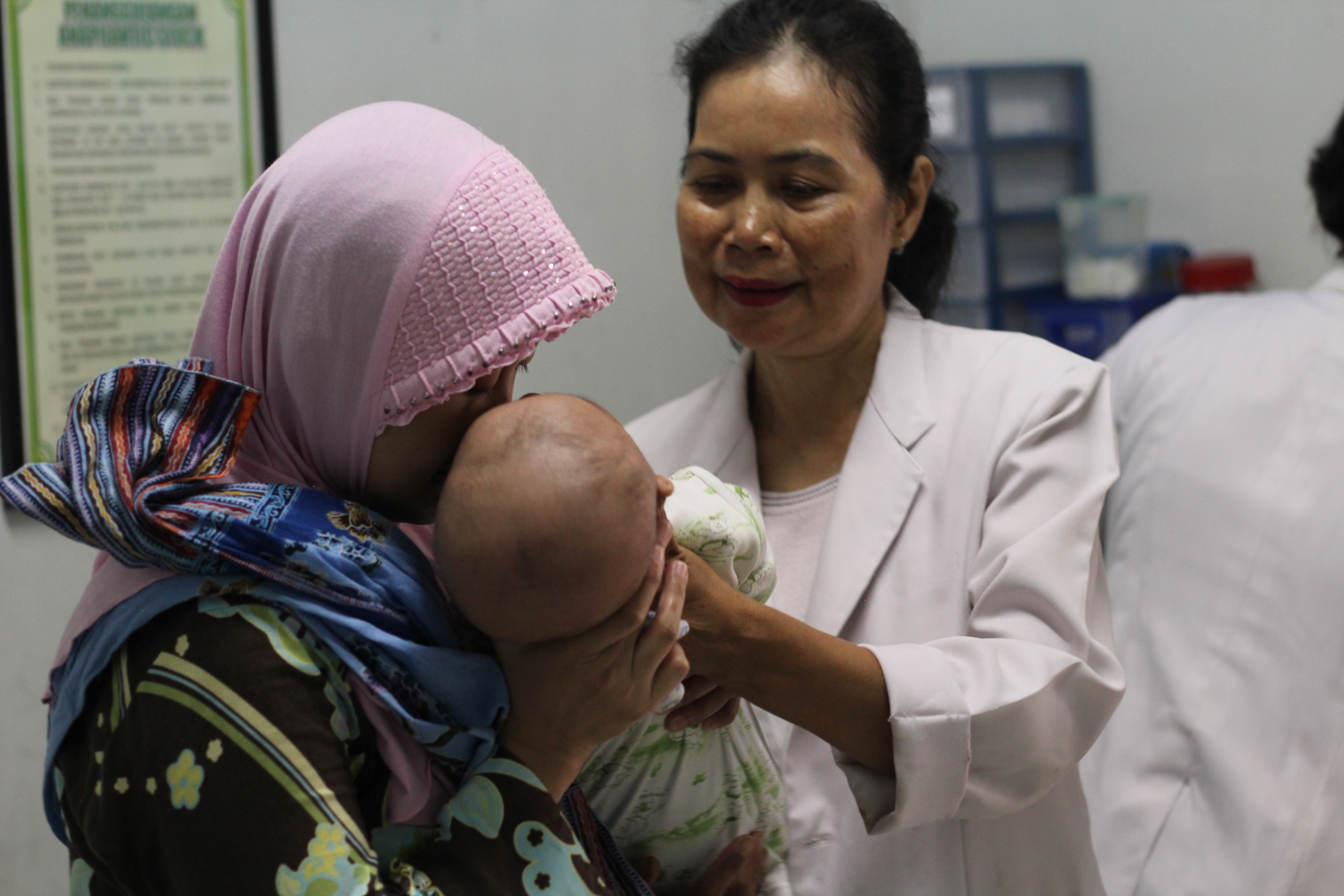Kavita Hatipoglu, Results for Development
Time and again, we’ve seen that setting policy is often the easier part of reform, with implementing policy being the real nut to crack. And when challenges loom large, sometimes it’s hard to see the progress you have made and determine the way forward. However, the South African government has taken some key early steps towards supporting young children and their families in a more systematic and comprehensive way, including through the recent National Integrated Early Childhood Development Policy (NIECDP; 2015) which laid out goals to be achieved in the coming years. Notably, the NIECDP also set out to strengthen parenting and family support at the community level, identifying Community Health Workers (CHWs) as the key personnel to deliver what are commonly called First 1000 Days Services.
As part of the Early Childhood Workforce Initiative (ECWI), Results for Development, along with Ilifa Labantwana and researchers from the University of Pretoria, recently studied the NIECDP and its early implementation in two provinces, KwaZulu-Natal and Western Cape, looking particularly at the capacity of CHWs in South Africa to deliver these expanded First 1000 Days services. Reflecting on our work, we’re sharing four key lessons on the implementation process in South Africa.
1. Clarity, Communication, and Coordination are essential
While nearly everyone we spoke with responded positively to expanding First 1000 Days Services, it was apparent that not everyone knew about the NIECDP or that those services were likely to be delivered through the existing CHW workforce. Even among those familiar, it was hard to pin down which services we were talking about because as of yet, there is no defined service package. Discussions with the provinces reflected that, without clarity from the top – about the detailed services or how their performance will be measured - implementation often stalls.
Further challenges arise when there isn’t enough communication between the line department responsible for developing the service package and the department tasked with delivering it. The Child, Youth, and School Health directorate within the NDoH recently led the overhaul of the Road to Health Booklet (RtHB), and commendably, the tool is organized around the five key pillars of care – Nutrition, Love, Protection, Healthcare, and Early Care, and aligned with the Nurturing Care Framework. However, CHWs are managed by a separate directorate – Primary Health Care – and it is not readily apparent how committed they are to (re)training the CHWs and other health personnel to maximize RtHB’s potential. Communication and coordination will need to be the name of the game to see any services comprehensively delivered and outcomes for young children and families changed.
2. More data is always a good place to start
While you don’t want to collect data for the sake of collecting data, more information about the baseline situation often aids implementation. And despite significant variation in the way services are organized and delivered among the provinces, we consistently heard about the need for more data. There is relatively little understanding, at the provincial or national level, about what the current CHW workforce looks like or what they precisely do. Past estimates suggest up to 72,000 paraprofessionals with differing levels of training and education, experience, and subject-matter expertise -- a vestige of a health system organized around tackling specific diseases.[1] Furthermore, little is known about the exact package of services CHWs currently provide, the visit length different services require, or their relative quality. This type of information could assist provinces to plan for, cost, and evaluate any service changes. Importantly, this would also help ensure that the needs of vulnerable populations are addressed. The need for data is not uncommon, and in fact, is something we heard repeatedly through interviews conducted with stakeholders across the globe, and part of the reason that the ECWI is setting out to develop a tool to help policymakers identify gaps in and strengthen their workforces.
3. Additional Training and Support will be essential if services are to be implemented and sustained
Policymakers in South Africa are aware of the need for enhanced training and are striving to develop it, yet there is simultaneous effort to simplify existing trainings. As CHW Coordinators and NDoH officials noted, there are currently 645 topics within Phase 1 and 2 of the CHW training and a clear need to streamline and update the content, ensuring better alignment with CHWs’ capacity, education, and working conditions. Efforts to simplify training while building out capacity for First 1000 Days Services aren’t necessarily at odds, but it merits close attention and suggests power struggles may be ahead. Wherever they end up, if providers are to deliver new services, they will need a host of training and upskilling opportunities, as well as continued mentoring and in-service support. However, frontline staff aren’t the only ones in need of training, supervisors and other health professionals do as well, if they are to support, monitor, and reinforce the new services. Current supervisors suggested that supervision was primarily compliance-based and focused on service delivery planning, as opposed to an opportunity to aid, support, or enhance the skills of CHWs. They also noted a lack of training on how to be a manager or provide any type of reflective supervision. As many First 1000 Days Services also encompass parenting support and coaching on developmental activities, it will be essential for supervisors to also understand the value of these services and be able to provide continuous support to ensure quality delivery.
4. Innovation can be sourced from within
In South Africa, policy is set at the national level and the nine provinces have a greater level of autonomy to determine the implementation service model that best fits their needs. For example, Western Cape primarily contracts NGOs to deliver community-based services, whereas KwaZulu-Natal has a well-developed and extensive system of Community Care Givers (CCGs) who have smaller caseloads but larger teams. CCGs are also employed on a contract-basis through the Provincial Department of Health. The Western Cape has also created a branded initiative, The First 1000 Days Initiative, to bring partners together and raise awareness of the importance of these early days for children and families. The variation among provinces presents an excellent chance to learn from the challenges and opportunities these differing workforce models present, and suggests a context ripe for innovation and adaptation. It would be highly beneficial to create more structured learning opportunities between the provinces on the road to full implementation.
Pushing ahead
The road to implementing integrated ECD policies is almost always messy. It requires bringing people, sectors, and roles, under one house and aligning them in new and different ways. From what we saw, South Africa continues to grapple with many of the same challenges that we often talk about in relation to the global early childhood workforce: they are an underpaid, undervalued, and undertrained system of professionals, para-professionals, and volunteers who, though dedicated to their work, require additional support to more effectively care for young children and their families. However, in South Africa, there are many indications -- like the adoption of the NIECDP and the recent creation of Mother-Child Think Tanks at the Department of Health -- that suggest that the country is up for tackling these challenges and that the momentum around the First 1000 Days will only increase. Their efforts tie into the growing global consensus around the Nurturing Care Framework, and our work at ECWI, where we are eager to continue learning alongside countries and support them with tools and resources as they crack that implementation nut!
Read the Country Study, Supporting the Early Childhood Workforce at Scale: Community Health Workers and the Expansion of First 1000 Days Services in South Africa.
[1]An audit of CHWs by the Department of Health in 2011 identified about 72,000 CHWs, the figure still quoted in planning documents for the 2015 ECD policy. Nearly 50,000 of these CHWs were identified as home-based carers (HBC) or community care givers (CCGs) while others include lay and adherence counsellors, DOTS supporters, peer educators, further highlighting the diversity of this workforce (National Department of Health, 2012. Annexure B1. Human resource requirements for re-engineering primary health care in South Africa.)
Did you find this interesting? Sign-up for our newsletter to receive updates about new resources and join the conversation about the early childhood workforce on Twitter.


